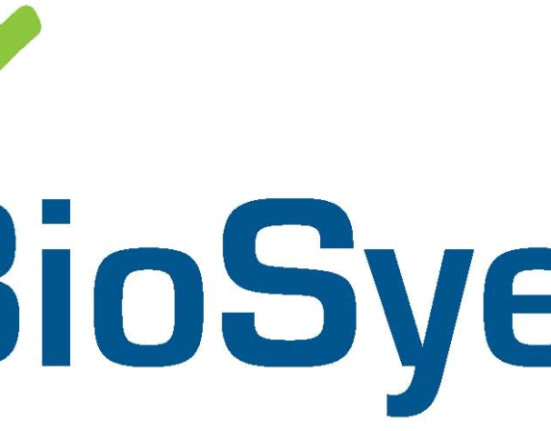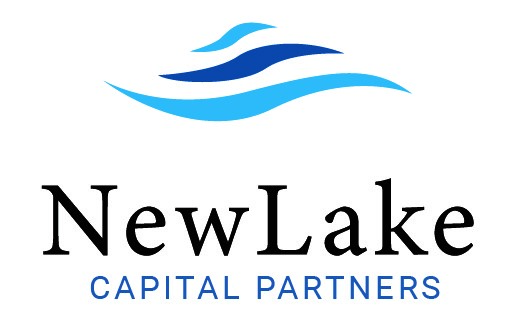Greystone Housing Impact Investors LP (NYSE:GHI) Q1 2024 Earnings Call Transcript May 8, 2024
Greystone Housing Impact Investors LP isn’t one of the 30 most popular stocks among hedge funds at the end of the third quarter (see the details here).
Operator: Greetings and welcome to the Greystone Housing Impact Investors Conference call. At this time, I would like to turn the call over to your moderator today, Mr. Jesse Coury, CFO, for opening remarks. Thank you sir. You may begin.
Jesse Coury: Thank you. I would like to welcome everyone to the Greystone Housing Impact Investors LP, NYSE ticker symbol GHI, fourth quarter of 2023 earnings conference call. During the presentation, all participants will be in a listen-only mode. After management presents its overview of Q1 2024, you will be invited to participate in a question-and-answer session. As a reminder, this conference call is being recorded. During this conference call, comments made regarding GHI which are not historical facts are forward-looking statements and are subject to risks and uncertainties that could cause the actual future events or results to differ materially from these statements. Such forward-looking statements are made pursuant to the Safe Harbor provisions of the Private Securities Litigation Reform Act of 1995.
Forward-looking statements can be identified by the use of words like may, should, expect, plan, intend, focus and other similar terms. You are cautioned that these forward-looking statements speak only as of today’s date. Changes in economic, business, competitive, regulatory and other factors could cause our actual results to differ materially from those expressed or implied by the projections or forward-looking statements made today. For more detailed information about these factors and other risks that may impact our business, please review the periodic reports and other documents filed from time to time by us with the Securities and Exchange Commission. Internal projections and beliefs upon which we base our expectations may change but if they do, you will not necessarily be informed.
Today’s discussion will include non-GAAP measures and will be explained during this call. We want to make you aware that GHI is operating under the SEC Regulation FD and encourage you to take full advantage of the question-and-answer session. Thank you for your participation and interest in Greystone Housing Impact Investors LP. I will now turn the call over to our Chief Executive Officer, Ken Rogozinski.
Kenneth Rogozinski: Good afternoon everyone. Welcome to Greystone Housing Impact Investors LP’s first quarter 2024 investor call. Thank you for joining. I will start with an overview of the quarter and our portfolio. Jesse Corey, our chief financial officer, will then present the partnership’s financial results. I will wrap up with an overview of the market and our investment pipeline. Following that, we look forward to taking your questions. For the first quarter of 2023, the partnership reported net income of $0.42 per unit and $0.23 of cash available for distribution, or CAD, per unit. Our first quarter reported net income of $0.42 per unit includes a $4.6 million non-cash gain that reflects the mark to market associated with our interest rate swap portfolio for the quarter; that translates to in non cash gain, which is not reflected in CAD.
We are currently a net receiver on substantially all of our interest rate swaps as we receive compounded sofa, which is now 5.31%, and pay a weighted average fixed rate of 339% on our approximately 313,000,000 in swap notional amounts as of March 31, 2024. Assuming that the compounded sulfur level stays constant over the next six months, that 192 basis point spread would result in us receiving approximately $3.2 million in cash payments from our swap counterparties, which would not be reflected in our net income but would be reflected as an additional $0.14 per unit in CAD. We also reported a book value of $14.59 per unit on $1.45 billion of assets and a leverage ratio as defined by the partnership of 71%. On March 13, we announced a regularly quarterly cash distribution of supplemental distribution of in the form of additional units, both of which were paid on April 30, 2024.
In terms of the partnerships investment portfolio, we currently hold $1.22 billion of affordable multifamily investments in the form of mortgage revenue bonds, governmental issuer loans and property loans, and $145 million in joint venture equity investments. As far as the performance of the investment portfolio is concerned, we have had no forbearance requests for multifamily mortgage revenue bonds and all such borrowers are current on their principal and interest payments. Physical occupancy on the underlying properties was at 92.1% for the stabilized mortgage revenue bond portfolio as of March 31, 2024. Our vantage joint venture equity investments consist of interest in seven properties, four where construction is complete, with the remaining three properties either under construction or in the planning stage.
For the four properties where construction is complete, we continue to see good leasing activity. We continue to see no material supply chain or labor disruptions on the vantage projects under construction. As we have experienced in the past. The vantage group, as the managing member of each project owning entity, will position a property for sale upon stabilization. As previously announced, the Vantage for Tomball property has been listed for sale. We have four joint venture equity investments with the Freestone Development Group, one for a project in Colorado and three projects in Texas. Site work has commenced on two projects and construction has commenced on one of the projects in Texas. Our joint venture equity investment in Village senior Living Carson Valley, a 102 bed seniors housing property located in Minden, Nevada, has begun vertical construction and the project currently has leased deposits for 48 of the property’s 102 units.
Our joint venture equity investment in the Jessam and Hays Farms, a new construction 318 unit market rate multifamily property located in Huntsville, Alabama, has commenced vertical construction as well. As previously announced, in December 2023, we sold our final MF property investment, the suites on Paseo student housing project. The partnership no longer owns any operating real estate property investments. With that, I will turn things over to Jesse Korey, our CFO, to discuss the financial data for the first quarter of 2024.
Jesse Coury: Thank you, Ken. Earlier today, we reported earnings for our first quarter ended March 31. We reported GAAP net income of $10.6 million, basic and diluted, and we reported cash available for distribution or CAD, of $5.2 million and $0.23 per unit. As Ken mentioned, our reported first quarter GAAP net income includes a $4.6 million non-cash unrealized gain on our interest rate swaps. Changes in the fair value of our interest rate swap portfolio will cause variability in our reported net income in periods of interest rate volatility, though such non cash fair value adjustments are excluded in our calculation of CAD, I will note that beginning in the fourth quarter of 2023, we reclassified gains and losses from our derivative insurance to a new line on our statement of operations titled net results from derivative transactions, as well as providing additional detail on derivative gains and losses in footnote 15 or page 36 of our Q1 form 10-Q.
These items were applied retroactively to our prior financial statements as well. We believe these changes provide useful information for readers regarding the volume and impact such derivatives have on our reported results. Our book value per unit as of March 31 was on a diluted basis, $14.59, which is a decrease of $0.58 from December 31. The decrease is primarily a result of a decline in the fair value of our MRB portfolio. Our third party service providers estimate the fair value of our mortgage revenue bond investments quarterly with models that predominantly use MND’s tax exempt multifamily yield curves. Tax exempt rates increased approximately 28 basis points on average crossed the curve from December 31 to March 31, which resulted in a corresponding decrease in the fair value estimates of our MRB portfolio.
As a reminder, we are and expect we will continue to be long term holders of our predominantly fixed rate MRB investments, so we expect changes in fair value to have no direct impact on our operating cash flows, net income, or CAD. As of market close yesterday, May 7, our closing unit price on the New York Stock Exchange was $15.58, which is a 7% premium over our net book value per unit as of March 31. We regularly monitor our liquidity to both take advantage of accretive investment opportunities and to protect against potential debt deleveraging events in if there are significant declines in asset values. As of March 31, we reported unrestricted cash and cash equivalents of $56.3 million. We also had approximately $75 million of availability on our secured lines of credit.
At these levels, we believe that we are well positioned to fund our current financing commitments, which I will discuss later. We regularly monitor our overall exposure to potential increases in interest rates through an interest rate sensitivity analysis, which we report quarterly and is included on page 79 of our Q1 form 10-Q. The interest rate sensitivity table shows the impact on our net interest income given various changes in market interest rates and other various management assumptions. Our base case uses the forward Sofir yield curve as of March 31, which includes market anticipated sofa rate declines over the next twelve months. The scenarios we present assume that there is an immediate shift in the yield curve and that we do nothing in response for twelve months.


27 Cheapest Housing Markets in the US
The analysis shows that an immediate 200 basis point increase in rates will result in a decrease in our net interest income and CAD of $209,000, or approximately $0.009 per unit. Alternatively, assuming a 50 basis point decrease in rates across the curve will result in an increase in our net interest income and CAD of $52,000, or approximately $0.002 cents per unit. As such, we are largely hedged against large fluctuations in our net interest income from market rate movements. In all scenarios, assuming no significant credit issues, our debt investments portfolio, consisting of mortgage revenue bonds, governmental issuer loans, and property loans, totaled $1.22 billion as of March 31, or 83% of our total assets. This amount is down $74 million from December 31, primarily due to pay downs and redemptions during the first quarter.
In February 2024, the borrowers of three construction related investments elected to prepay approximately $72 million of property loans prior to property completion, though we still hold governmental issuer loan investments associated with these three properties. We currently own 86 mortgage revenue bonds that provide permanent financing for affordable multifamily properties across 15 states. Of these mortgage revenue bonds, 31% of our portfolio relates to properties in Texas, 27% in California, and 20% in South Carolina. We currently own nine governmental issuer loans that finance the construction or rehabilitation of affordable multifamily properties across five states. Such loans often have companion property loans or taxable governmental issuer loans that share the first mortgage lien.
During the first quarter, we advanced funds totaling $9.1 million for our governmental issuer loan, taxable governmental issuer loan, and property loan commitments. During the first quarter, we completed one conversion of our governmental issuer loan investment to permanent financing by Freddie Mac. The governmental issuer loan investment was purchased at par value by Freddie Mac pursuant to its forward purchase commitment. In addition, a related taxable governmental issuer loan was repaid by the borrower at par. Redemption proceeds for the governmental issuer loan and taxable governmental issuer loan totaled $34 million, of which $28 million was used to pay off our related TOB debt financing. Our outstanding future funding commitments for our mortgage revenue bond, governmental issuer loan, and related investments was $26 million as of March 31.
These commitments will be funded over approximately 24 months and will add to our income producing asset base. We also expect to receive redemption proceeds from our existing construction financing investments nearing maturity, which will be redeployed into our remaining funding commitments. We apply the CECL standard to establish credit loss reserves for our debt investments and related investment funding commitments. We reported a negative provision for credit loss of $806,000 for the first quarter, largely driven by recent governmental issuer loan, taxable governmental issuer loan, and property loan redemptions, and a reduction in the weighted average life of our remaining investment portfolio. We have adjusted back the impact of the provision for credit losses in calculating CAD consistent with our historical treatment of loss allowances.
Our joint venture equity investments portfolio consisted of twelve properties as of March 31, with a reported carrying value of approximately $145 million. We advanced additional equity under our current funding commitments totaling $7 million during the first quarter. Our remaining funding commitments for JV equity investments totaled $54.3million as of March 31. Our debt financing facilities are used to leverage our investments and had an outstanding principal balance totaling $980 million as of March 31. This is down $37 million from December 31, primarily due to debt repayments associated with redemptions of our debt investments. We manage and report our debt financing in four main categories on page 73 of our form. 10-Q. Three of the four categories fixed rate assets with fixed rate debt, variable rate assets with variable rate debt, and fixed rate assets with variable rate debt that is hedged with interest rate swaps are designed such that our net return is generally insulated from changes in short term interest rates.
These categories account for $921 million, or 93.7% of our total debt financing. The fourth category is fixed rate assets with variable rate debt with no designated hedging, which is where we are most exposed to interest rate risk in the near term. This category only represents $60 million, or 6.3% of our total debt financing. We regularly monitor our interest rate risk exposure for this category and may implement hedges in the future if considered appropriate. On the preferred capital front, we executed two issuances of our Series B preferred units in the first quarter. The first issuance was $17.5 million of Series B preferred units that were exchanged for $17.5 million of previously issued Series A preferred units. The second issuance was a sale of $5 million of Series B preferred units to a new investor for $5 million of gross proceeds.
The earliest redemption date of the newly issued Series B preferred units is early 2030. With certain limited exceptions, these issuances provide non-dilutive fixed rate and low cost institutional capital for executing our strategy. We redeemed our last remaining $10 million of Series A preferred units in April 2024. After this redemption, the next earliest redemption date for our outstanding preferred units is not until April of 2028. We continue to pursue additional issuances of preferred units under active offerings for our Series A one and Series B preferred units. In March 2024, we reactivated our at the market or ATM, offering to sell up to $50 million of newly issued units into the market. We sold 64,765 units under the ATM program for gross proceeds of approximately $1.1 million during the first quarter.
Units issued under the ATM program allow us to raise additional capital without price dilution and at a substantially reduced cost to a traditional follow on offering. I’ll now turn the call over to Ken for his update on market conditions and our investment pipeline.
Kenneth Rogozinski: Thanks Jesse the months of March and April saw rates in the Muni bond market trend higher as fixed income investors came to grips with seeing potential fed rate cuts pushed further into the future due to persistent inflation. The Bloomberg Municipal Index posted a total return of negative 1.2% for March and April. The Bloomberg High Yield Municipal Index generated a total return of positive 0.6% for the same two month period. From a market technicals perspective, the first four months of the year saw $141 billion of gross issuance, with many market participants predicting 2024 total issuance of over 400 billion through April. Year-to-date, fund and ETF inflows totaled $6.6 billion. According to Refinitiv, as of yesterday’s close, ten year MMD is at 2.7% and 30 year MMD is at 3.8%, roughly 25 basis points higher in yield, respectively than at the time of last quarter’s call.
This is consistent with the bare flattening of the broader fixed income yield curves that we have seen so far this year. With this flattening trend, ten year MMD is actually the low point of the current Muni yield curve, the ten year muni to treasury ratio is still approximately 60%, demonstrating the recent strength of munis, continued volatility in rates, the magnitude of interest rate increases in the past 18 months, particularly in the short end of the curve and cost inflation, have presented challenges to our developer clients on new transactions. Our affordable housing developer clients continue to rely on more and more governmental subsidies and other sources of soft money to make their transactions financially feasible. We continue to work with our clients to deliver the most cost effective capital possible, especially the use of the Freddie Mac tax exempt loan forward commitment in association with our construction lending.
We will continue to look for other opportunities to deploy capital in our JV equity strategy on a selective basis. We believe that getting new projects underway now, while other sponsors face significant challenges, will put us in a better position for success with our exits three to five years down the road when new supply may be limited. We believe that our new JV equity investments made in 2023 and 2024 are reflective of that approach. With that, Jesse and I are happy to take your questions.
See also
25 Richest Billionaires in Media and Entertainment and
The World’s 30 Least Powerful Passports in 2024.
To continue reading the Q&A session, please click here.







